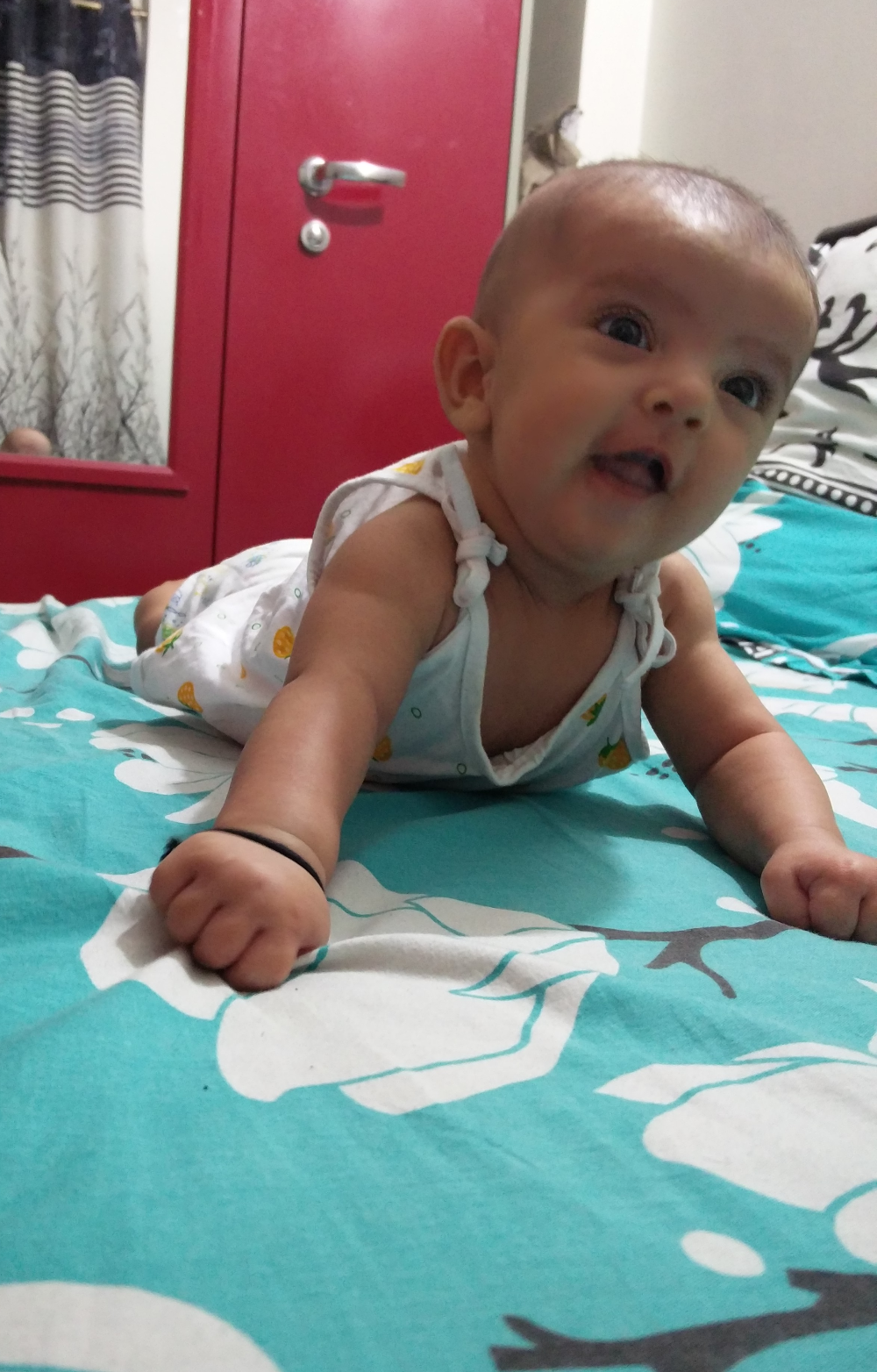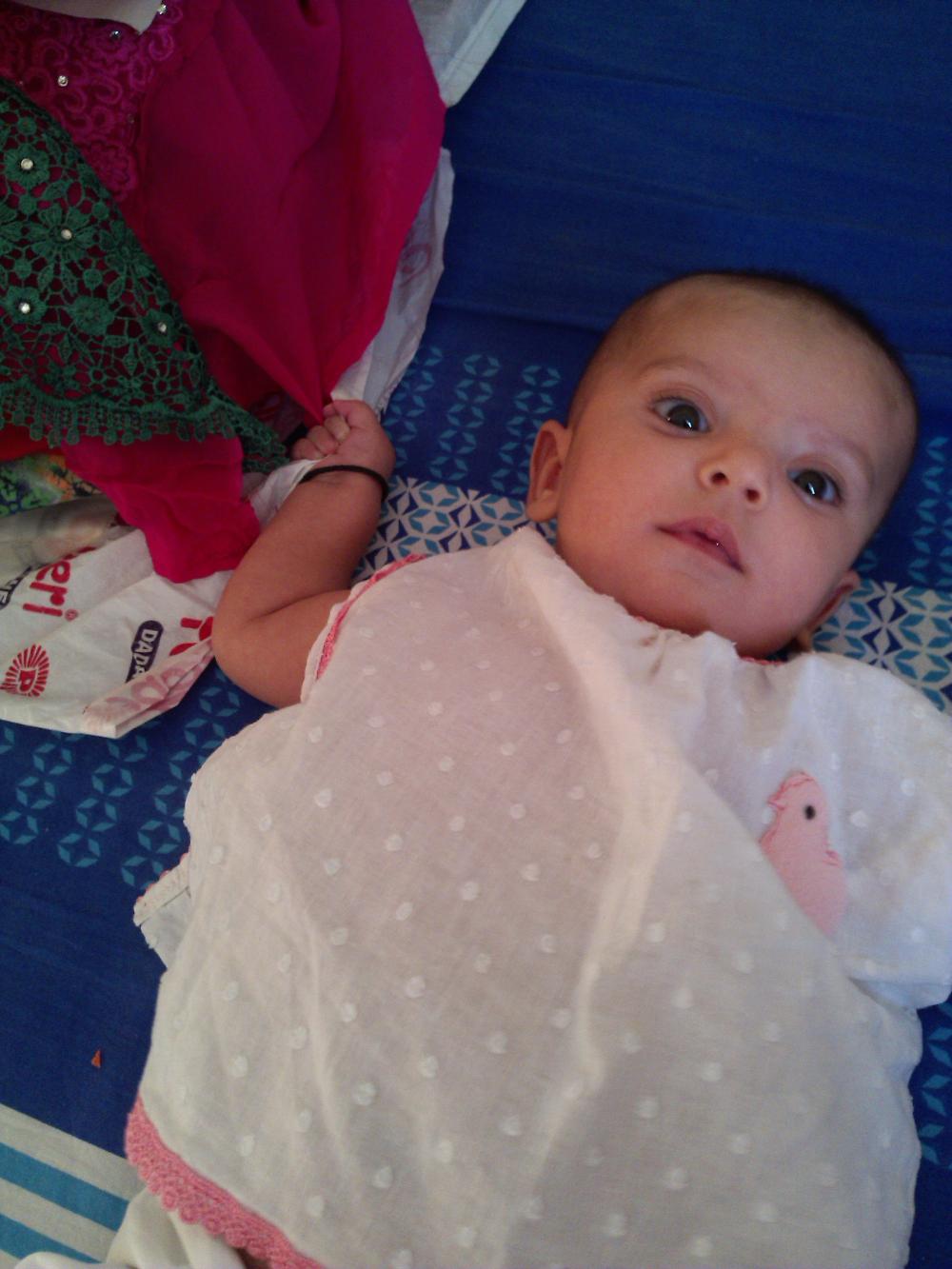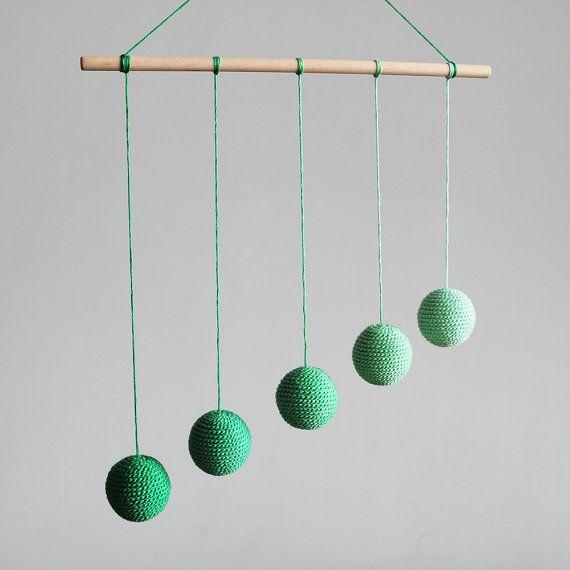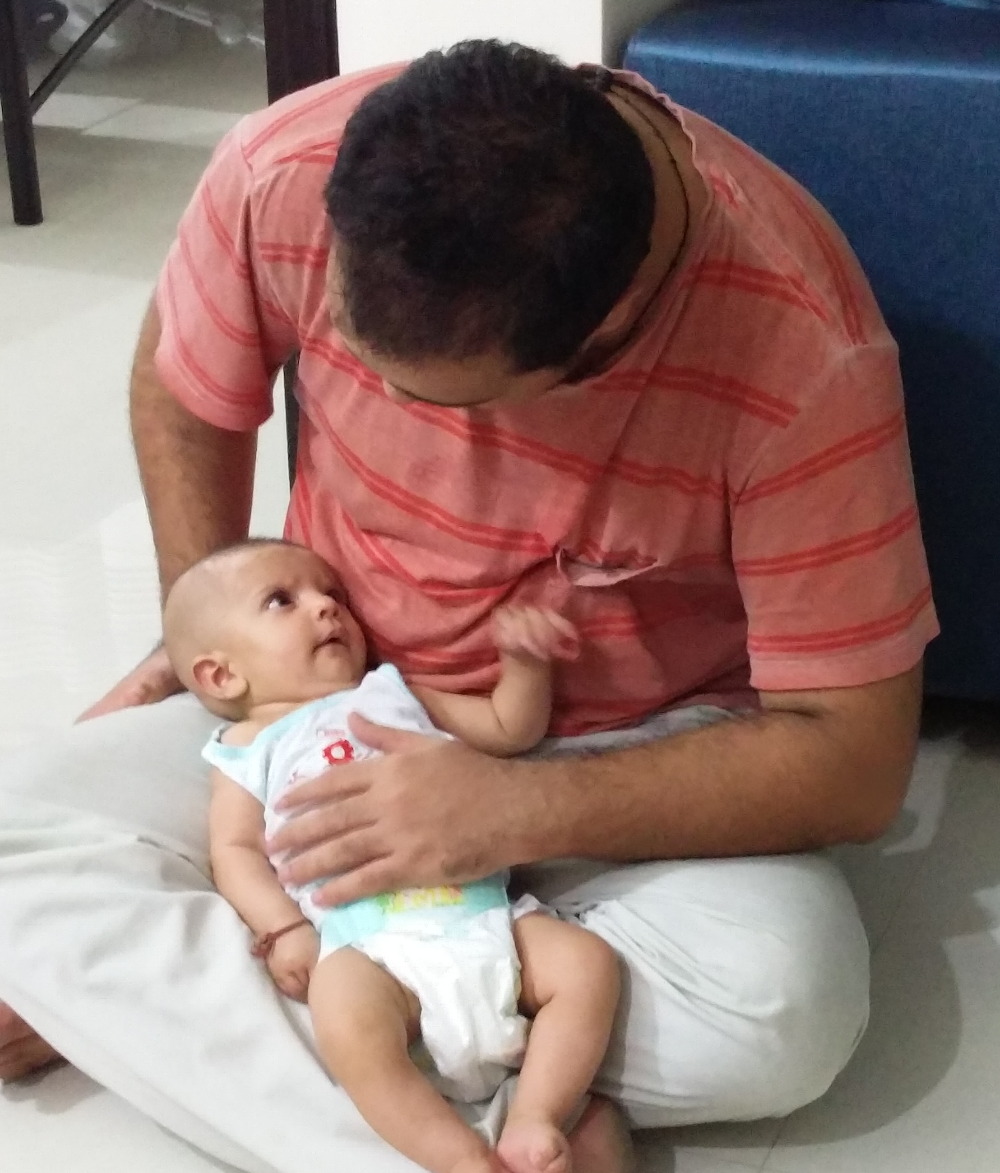So we completed two months, she’s settled into her own house (remember I mentioned we were at my mother’s house) and we got her head shaved too (she took it pretty well).
Now is where the action starts! What do I mean?
Siyana’s enjoying every bit of her movement; she is able to grasp things with her hands and started tummy time too. I’m going to cover this and more today.
Tummy Time
She is now in her third month and we make sure we allow her a certain amount of tummy time each day (just turning her over from her back to her tummy). She is already able to hold her head up without help when on her stomach. Once tired, she simply puts her head down. We give her about 10 to 15 minutes tummy time at a stretch (unless she gets uncomfortable before that).
She loves being on her tummy as she gets to see a lot more of her surroundings on her own. You can actually see the sparkle and curiosity in her eyes. Tummy time helps strengthen the back and neck muscles and also aids in development for crawling. Some babies may not enjoy it this early and some may even start earlier – you will have to try and see when your baby is comfortable with this and start then.
So, these are my Hands? Interesting! Let’s see what I can do with them.
Do you think that the first time your baby used their hands to hold something is important? Would it be just as important as turning over, sitting up, crawling, etc.
We do not realize the importance of the use of hands in children. Maria Montessori says, “The hands are the instruments of man’s intelligence.” The hands play a very important role in a child’s development, assisting them to reach their potential. When each child starts using their hands, is different but every child will use their hands (and tongues) to explore their environment. Keep a look out on when your baby begins to discover their hands; a few things I noted with my munchkin were:
·Holding my hair when I breastfed her, sometimes even my clothes.
·Grasping the blanket we used to cover her.
·Consciously holding on to our finger when we gave it to her.
·Holding on tight to a plastic bag kept close to her.
·Beginning to put her hand into her mouth.
The interlocking discs are recommended to use for infants once they start grasping things. They are helped to develop wrist movement and lead them to voluntary grasping. They are light in weight so easy for the baby to lift up when ready. They tend to use it as a teether as well later on and once a little older transfer it from one hand to the other, roll it and so on.
It was a little difficult to find this in India and as an alternate I used a simple wooden bangle I had which was light in weight and easy for her to grasp on to.
You could also additionally give them a napkin to hold, they enjoy doing that too. I avoided using the regular rattlers as they are very noisy for this age (apart from being non-Montessori)
The Gobbi Mobile
This next Mobile is the visual series and comes after the Octahedron. It’s normally introduced around 8 to 10 weeks. These are made up of 5 or 7 balls in shades of one colour e.g. shades of green. The longest side will be the darkest shade and the shortest side is the lightest shade of the colour being used. The thread used to hang this should also be the same colour as used in the Mobile. This, like the others, benefits in visual development.
Language
I’ve highlighted the importance of language and talking to an infant in one of my previous articles as well. Babies being to communicate right from birth (rather before that) and it is imperative for us to provide them with a rich environment for language. We must speak to them just like we speak to others and not baby talk.
An excerpt from The Joyful Child, “In the first days, months, and the first year of life the infant is especially interested in the sound of the human voice and in watching the face and lips of a speaking person. It is not an accident that the focusing distance of the eyes of a newborn are exactly the space between his face and that of the mother while nursing. Perhaps the best first communication experiences are provided while nursing the baby.
We can feed the child's intense interest in language, and prepare for later spoken language, by speaking clearly, not using "baby talk", by not raising our voice to an unnatural pitch often reserved for speaking to pets, and not oversimplifying language in the presence of the child.”
Do you baby talk? How do you encourage language development for your baby?




